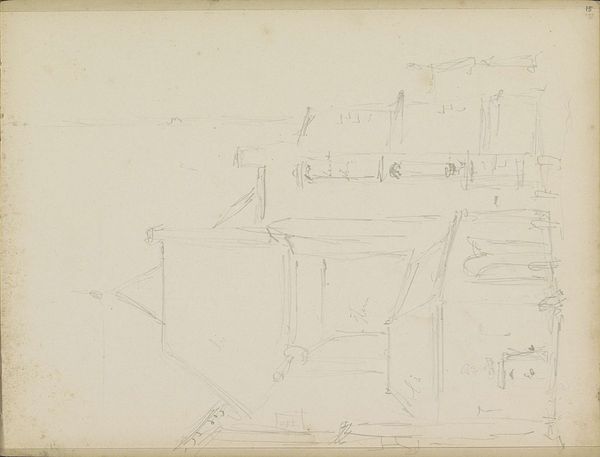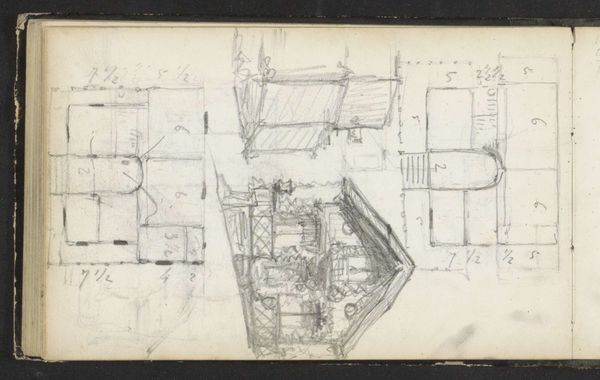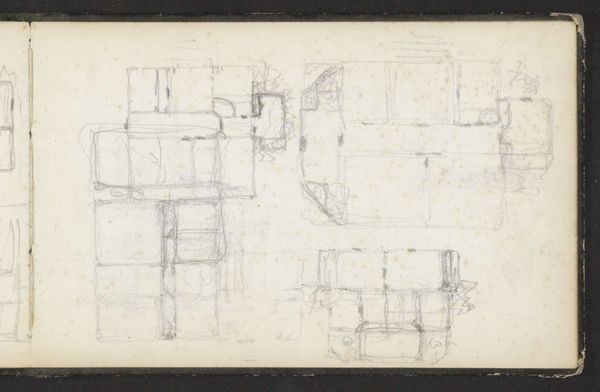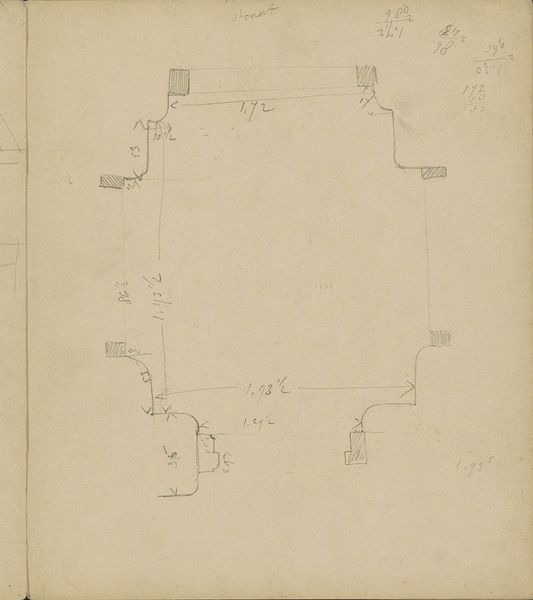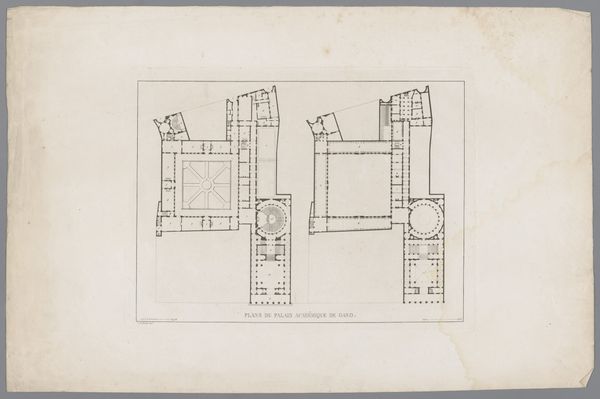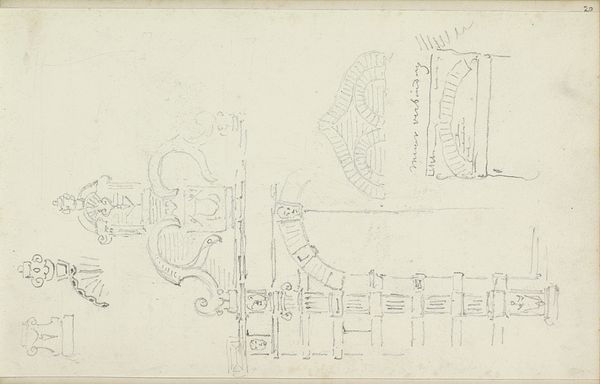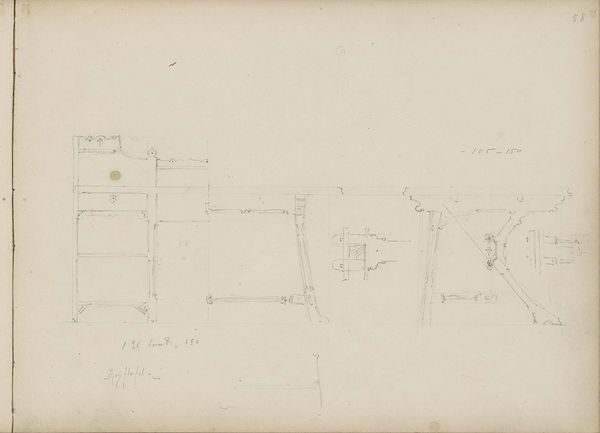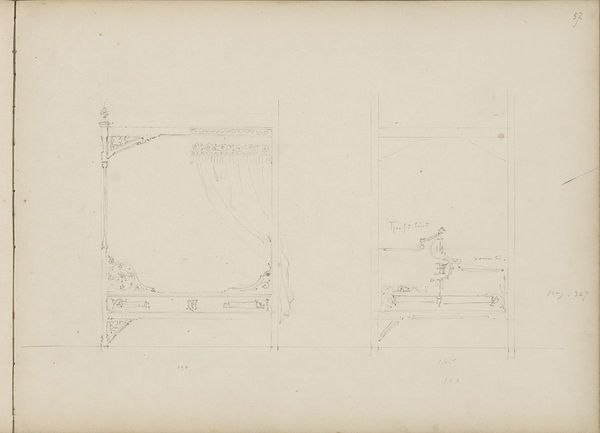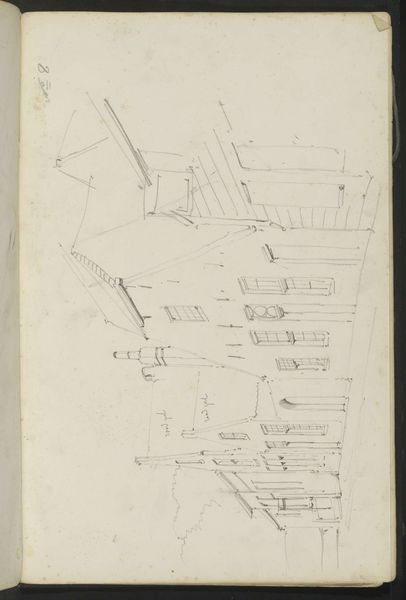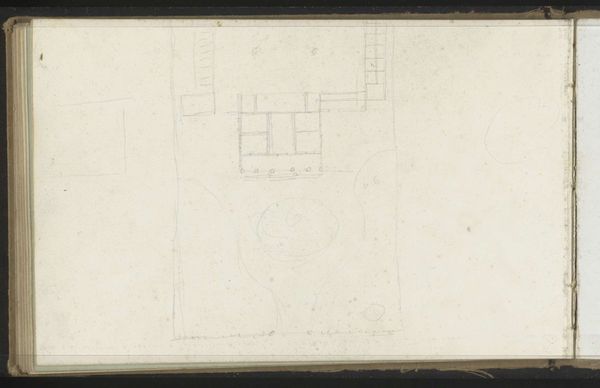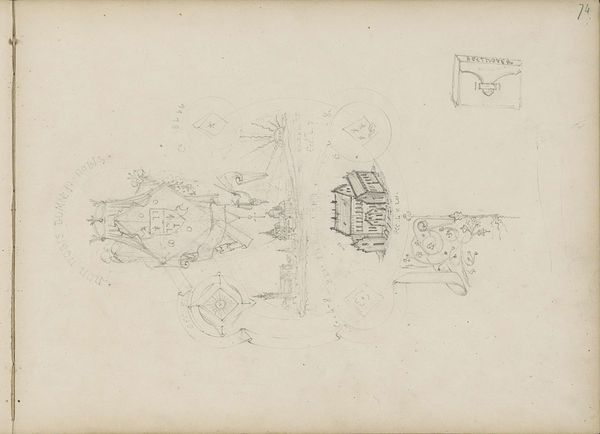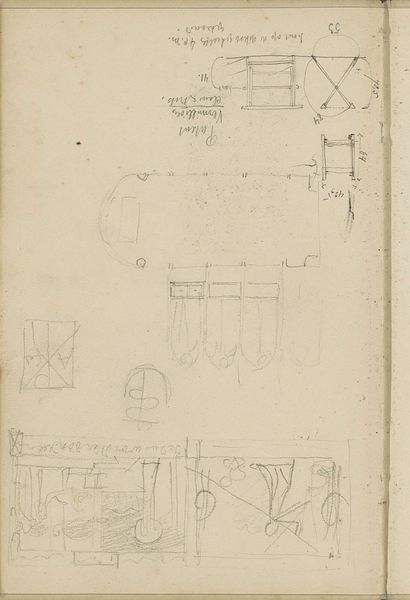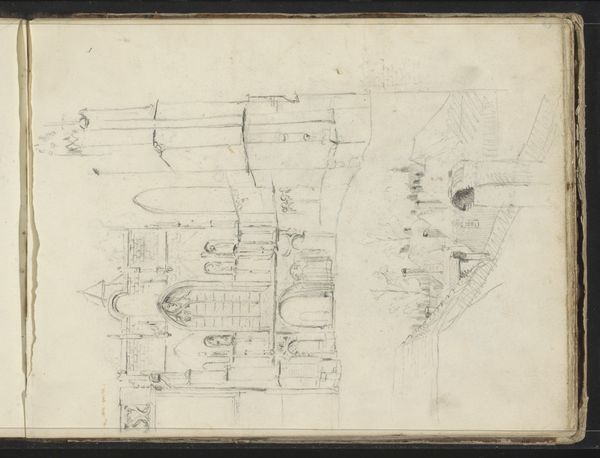
drawing, paper, pencil, architecture
#
architectural sketch
#
drawing
#
table
#
aged paper
#
toned paper
#
light pencil work
#
old engraving style
#
sketch book
#
paper
#
personal sketchbook
#
sketchwork
#
pencil
#
sketchbook drawing
#
sketchbook art
#
architecture
Copyright: Rijks Museum: Open Domain
Curator: Looking at Pierre Joseph Hubert Cuypers’ architectural sketch, "Tafels en een wapen" created between 1857 and 1859, now residing in the Rijksmuseum, I’m struck by its intimacy. There’s something powerful about seeing a building component in this raw, initial state. Editor: It’s fascinating how seemingly simple tools—pencil and paper—give birth to the blueprints for grand structures. The delicate lines and aging of the toned paper invite a sort of haptic understanding of the artist's process. It’s less about high art, and more about the labour behind the design. Curator: Absolutely. This drawing provides a lens into the broader cultural revivalism movement, seeking inspiration from earlier ages, and reimagining gothic structures through a modern Dutch context. Considering his identity as a staunch Catholic, how do you think his religious conviction might have influenced his aesthetic vision here? Editor: Knowing the historical tensions between Catholic and Protestant communities during this period, Cuypers’ traditional design choices may signal more than just stylistic preference; it could be an explicit cultural reclamation, and even an act of defiance embedded in each drawn element. Curator: Exactly, viewing this architectural fragment outside the walls of the structures it intended to produce allows us to view it instead through the framework of politics. And these small heraldic objects signal a world where symbolic forms solidified political power, class hierarchies, and artistic innovation. How can we contextualize such power structures? Editor: The sketch shows the craft and the process itself, emphasizing that structures reflect resources and labor relations of the society that builds them. It challenges notions around architectural and art production as inherently separate categories. Curator: True. It speaks to the labor and even class involved in creation. Seeing the artistry infused even within functional pieces complicates hierarchical boundaries. The very material becomes evidence of labor and the relationship to production. Editor: This opens up an entire avenue of questioning! The choice of aged paper gives the sense of durability, perhaps emphasizing the long lifespan and ongoing history of material engagement. Curator: Well, viewing this as a fragment gives an idea about broader systems and allows one to analyze architecture from angles otherwise missed. Editor: I agree completely.
Comments
No comments
Be the first to comment and join the conversation on the ultimate creative platform.
